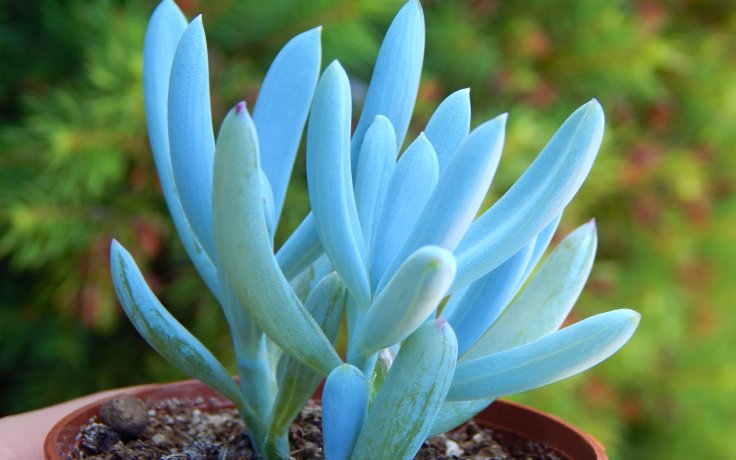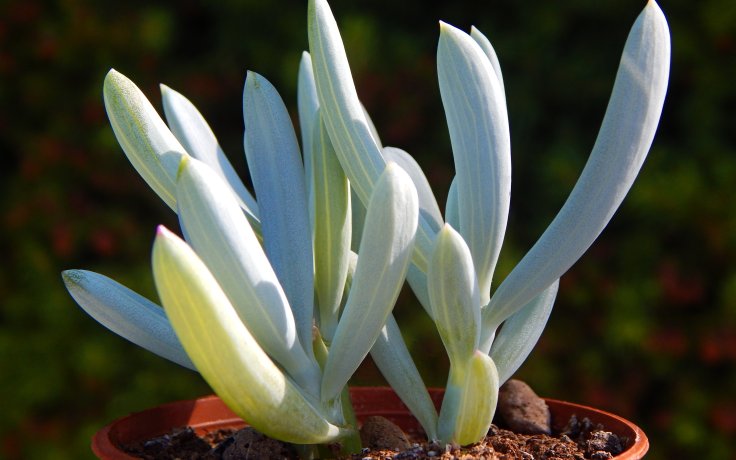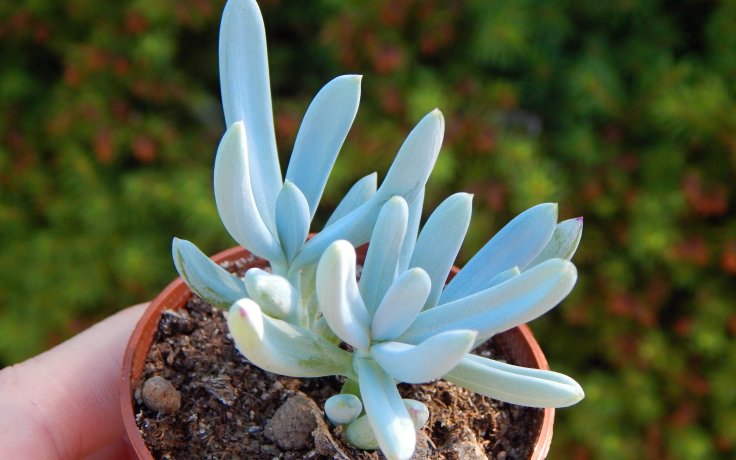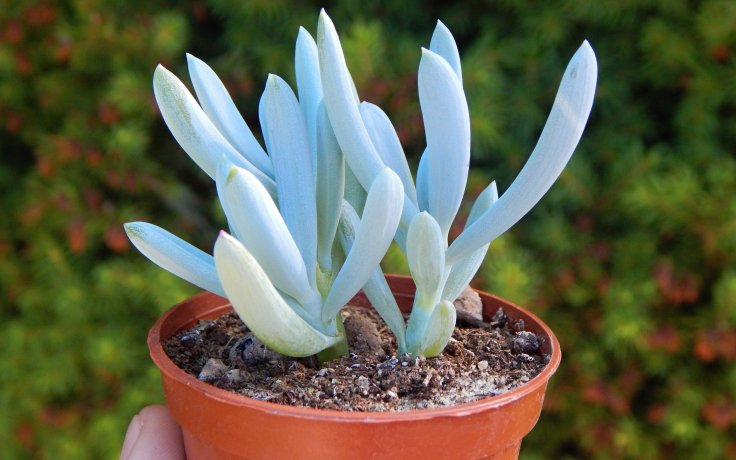- Home
- Succulents
- Senecio
- Senecio serpens





Senecio serpens
Place in sun or partial shade.
I recommend moderate watering approximately once a week throughout the year.
In winter, keep the plant in temperatures around 10 °C. The plant is not hardy.
Senecio serpens belongs to a group that is similar in appearance to blue Senecio. It belongs together with Senecio kleiniiformis and Senecio ficoides (which can also be found in our shop).
Otherwise called Curio repens, also known as Kleinia repens or Blue Chalk Sticks. It is a fascinating succulent with a characteristic blue tinge not only in its leaves but also in its stems. The word "repens" = refers to the creeping way the stems of this plant grow in the wild.
Leaves are blue-grey to blue-green, shorter with a rounded end and a barely noticeable tip. Their surface is covered with a waxy coating that protects their interior from strong sunlight and evaporation of water. The plating is almost white and can be easily wiped off with careless handling. The plant grows clumpily from relatively thick roots, although it does not usually form rhizomes like most other succulent plants. Lateral shoots usually grow at the base of the plant from underground shoots.
Initially it grows upright, but tends to become semi-erect when it reaches a certain height. It reaches a height of approximately 20 cm. The flowers of this plant are inconspicuous, white or yellowish, and are borne on long stalks.
The plant is easy to shape by pruning, allowing for a tree-like form. Regular pruning is also a good means of maintaining a compact shape and acceptable plant size. If the aim is to achieve faster growth, Senecio serpens can take a little more fertiliser than other succulents, but it is important to be careful to avoid rot in long waterlogged roots. Otherwise it is a fairly undemanding old plant with atypical colouring suitable for the not very experienced grower.